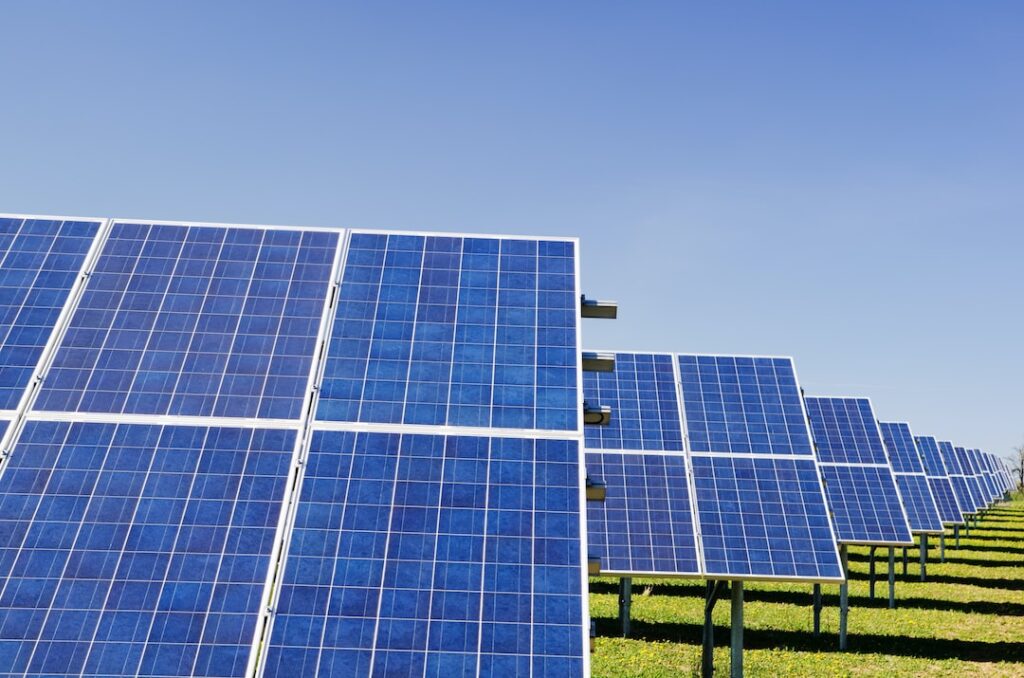Making buildings more energy efficient is a key part of reducing greenhouse gas emissions and helping to protect the environment. Simple changes such as improving insulation, lighting and HVAC systems, entry points, and appliances can go a long way in how to increase energy efficiency in buildings significantly.
This blog post will discuss five different ways how to increase energy efficiency in buildings while also saving money on utility bills.
Let’s get started.
Table of Contents
How to Increase Energy Efficiency in Buildings
The first step in improving energy efficiency in commercial buildings is inspecting existing insulation.
Insulation helps reduce the amount of heat that escapes from a building, keeping it warmer in winter and cooler in summer. There are several types of insulation available, each with its own benefits and drawbacks.
Fiberglass is the most popular type of insulation due to its affordability and availability in rolls or batts that can be easily installed in walls or attics.
Cellulose is made from recycled paper products and provides excellent soundproofing qualities as well as thermal protection.
Spray foam is a liquid form of insulation that expands when applied and creates an airtight seal around windows and doors for improved energy efficiency.
Rigid board insulation comes in large sheets that are often used on exterior walls or under floors for added protection against cold temperatures outside the home.
Reflective foil insulation works by reflecting heat away from the home instead of absorbing it like other materials do which helps keep homes cooler during hot summer months.
In addition to trapping air, properly installed insulation helps reduce noise levels between rooms or floors within a building structure.
It also protects against moisture damage since it prevents condensation buildup which can lead to mold growth.
By properly insulating your building, you can reduce energy costs and improve comfort levels. Now let’s look at how lighting can also help increase the energy efficiency of a building.
Energy-Efficient Lighting Solutions
Lighting is another area where you can cut back on energy consumption. Here are a few tips on how to increase energy efficiency in buildings through lighting solutions.
LED bulbs are becoming increasingly popular due to their energy efficiency and long life. They consume up to 90% less energy than traditional incandescent bulbs which can save money on electricity bills.
LED bulbs also last much longer with an average lifespan of 25,000 hours compared to only 1,200 hours for an incandescent bulb. This means that you won’t have to replace them as often and will save time and money in the long run.
Natural lighting is a great way to reduce your reliance on artificial light sources such as lamps or overhead lights. Installing skylights or windows that let in natural light can help brighten up any room without the need for electricity.
You can also install solar tubes or sun tunnels that funnel sunlight into dark areas of your home where it would be difficult to get natural light from windows or skylights.
Automated lighting systems are a great way to make sure you don’t waste energy by leaving lights on when they aren’t needed. These systems allow you to control all of the lights in your home from one central location using a smartphone app or remote control device.
You can set schedules so that certain lights turn off at specific times throughout the day, helping you conserve energy without having to remember to manually switch off each individual light.
Lighting is an important part of increasing energy efficiency in buildings. By making the switch to LED bulbs and utilizing natural lighting solutions, you can make a big difference. Now let’s look at how HVAC systems play a role in energy efficiency.
HVAC Systems
Heating, ventilation, and air conditioning make up a huge chunk of your electric bill. If you want to know how to increase energy efficiency in buildings, this is one area you should prioritize.
HVAC systems are essential for maintaining comfortable temperatures in buildings. Upgrading to high-efficiency systems is a great way to reduce energy costs and improve the comfort of your workplace.
High-efficiency HVAC systems also have better temperature control, allowing you to keep your space at a consistent temperature without having to constantly adjust the thermostat. They often come with advanced features such as humidity control and air filtration that can help improve indoor air quality.
When it comes to maintaining HVAC systems, regular checkups are key in order to ensure that everything is running smoothly and efficiently. It’s important to inspect all components of the system regularly, including filters, ductwork, fans, coils, and motors.
Changing out dirty filters on a regular basis will help maintain optimal performance levels while reducing strain on the system — which can lead to costly repairs.
Zoning your building for improved efficiency is another great way to save money on HVAC costs.
Zoning allows you to customize different areas according to specific needs such as cooling bedrooms during summer months and warming living rooms during winter when occupancy is higher. By zoning off certain parts of your building, you can maximize efficiency by only using what’s necessary when it’s necessary.
HVAC systems can be a major source of energy efficiency in buildings, but other elements like windows and doors should also be considered for improved energy efficiency.
(Source)
Optimizing Your Windows and Doors
Double-Glaze Windows and Doors
Double-glazing is a great way to improve the energy efficiency of windows and doors. Double-glazed windows are made up of two panes of glass with an air gap between them, which helps reduce heat transfer through the window. This means that less energy is lost through the window, resulting in lower heating bills during cold weather months.
In addition to providing better insulation, double-glazed windows also help reduce noise from outside sources like traffic or loud neighbors.
Weather Stripping Reduces Air Leaks Around Frames
Weatherstripping is another important component when it comes to improving the energy efficiency of your building’s windows and doors. It seals any gaps around the frames where air can escape, thus reducing drafts and helping keep warm air inside during winter months.
It’s important to check weather stripping regularly for signs of wear or damage as this will affect its effectiveness at keeping out drafts. Replacing worn weather stripping can be done easily by your admin staff without needing professional assistance.
Window Treatments Increase Energy Efficiency in Buildings
Certain types of window treatments can also help increase energy efficiency in buildings by blocking out sunlight during hot summer days while still allowing natural light in on cooler days.
Window shades, blinds, curtains, shutters, and other treatments are all effective ways to regulate indoor temperatures while still letting some natural light in. Just make sure they fit properly so there aren’t any gaps where heat can escape.
Double-glazing, weather stripping, and window treatments can all drastically increase energy efficiency in a commercial building. Now let’s look at how appliances and electronics can do the same.
Appliances and Electronics
Energy Star-rated appliances and electronics are a great way to increase energy efficiency in buildings. These products use up to 30% less energy than their non-certified counterparts, making them an excellent choice for those looking to reduce their carbon footprint.
Smart power strips can also be used to automate the process of powering down unused devices when not in use, further reducing electricity consumption.
Unplugging computers is another simple yet effective way of conserving energy. Instead of leaving them on standby mode, unplug electronic devices from the wall outlet when not in use.
Conclusion
Making simple changes to insulation, lighting, HVAC systems, windows and doors, and appliances and electronics in your building can vastly improve its energy efficiency. Taking the time to research how to increase energy efficiency in buildings can help you identify ways to reduce energy consumption while still maintaining a comfortable environment for occupants.
We must take action to increase energy efficiency in buildings. With careful planning and implementation of energy-saving measures, you can make a significant impact on reducing the amount of energy used in your buildings and ultimately save money over time.
By taking steps now to increase energy efficiency in buildings today, we are helping create a more sustainable future for tomorrow. Every effort counts towards making our buildings greener, so let’s start today!





